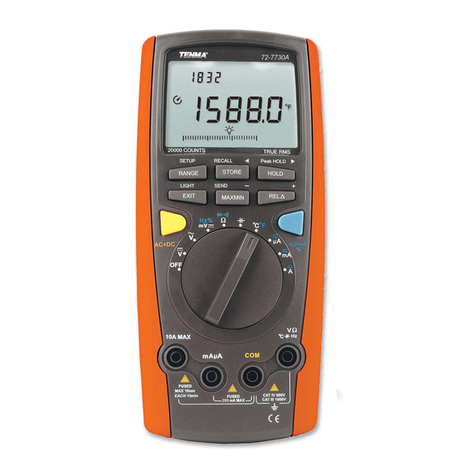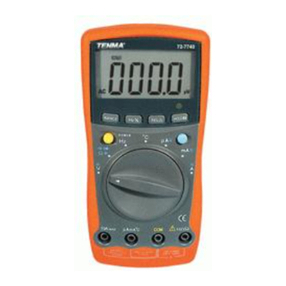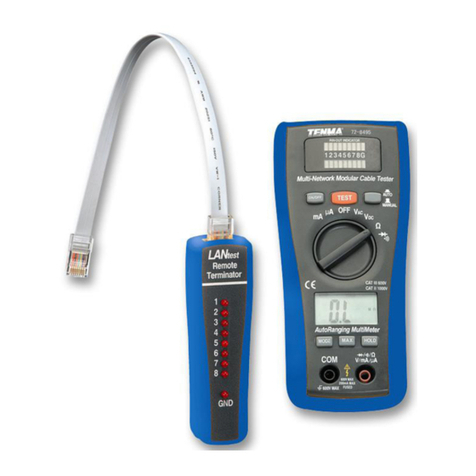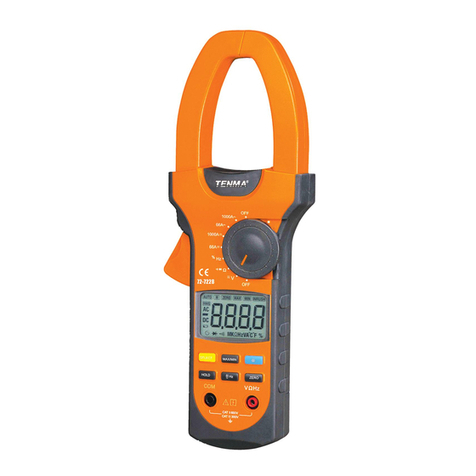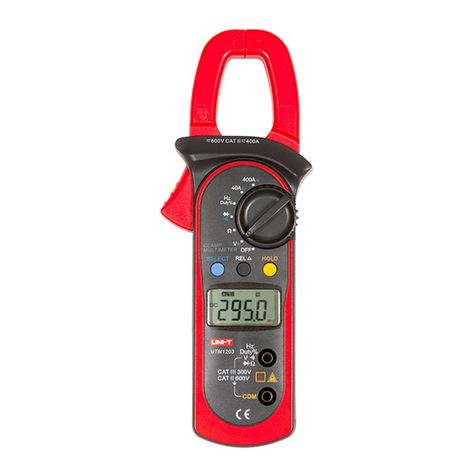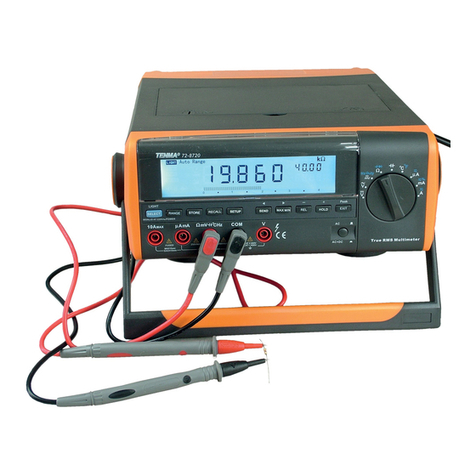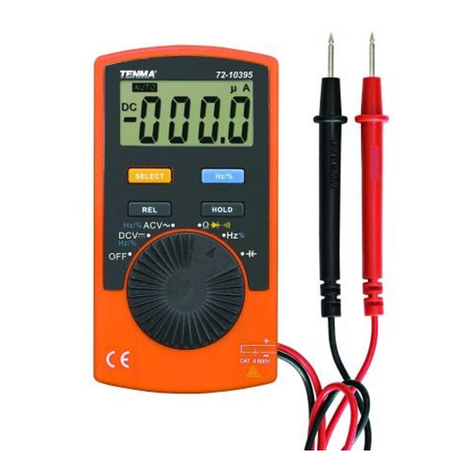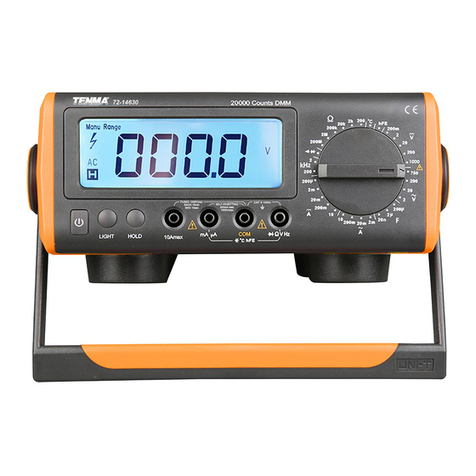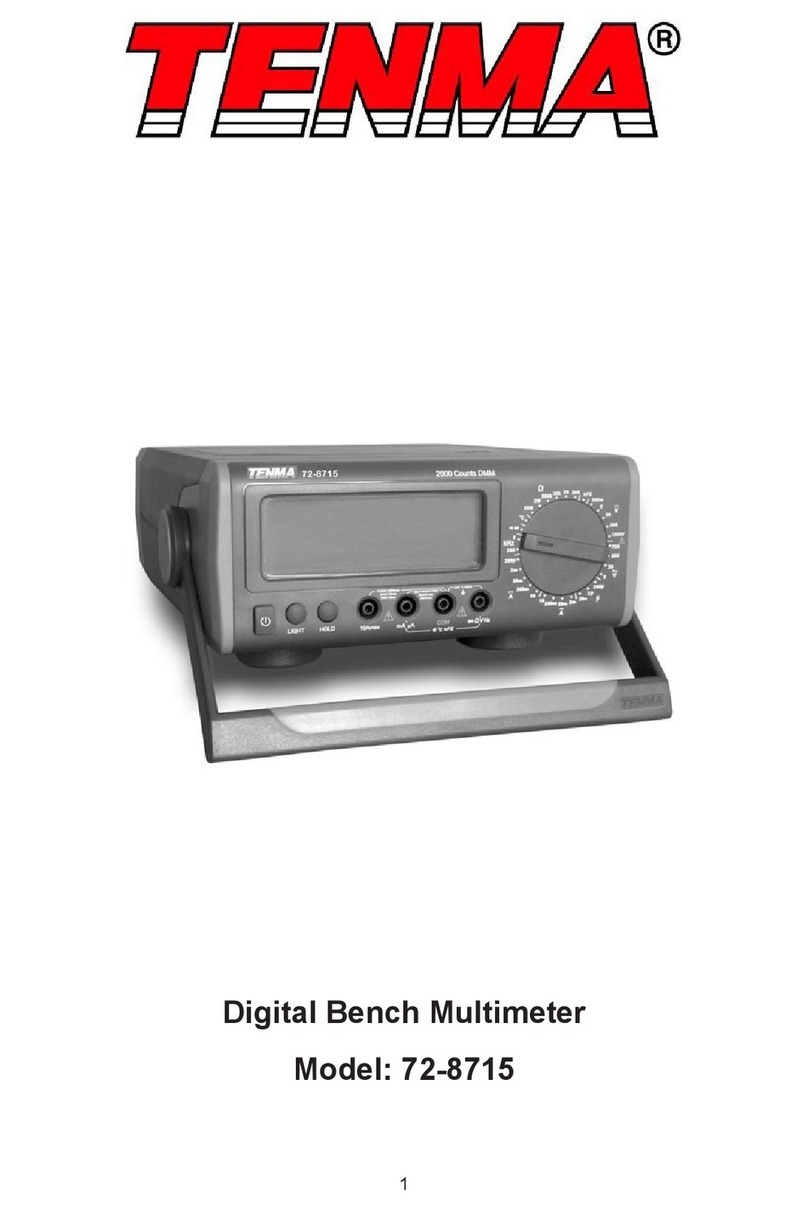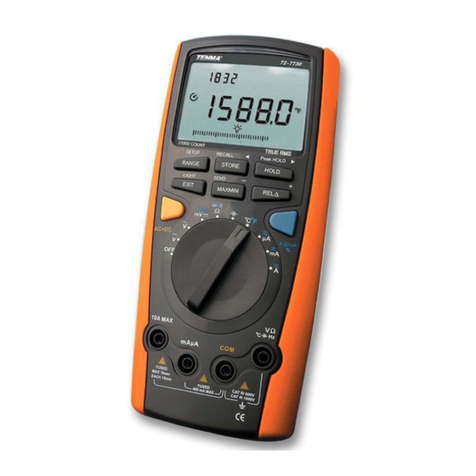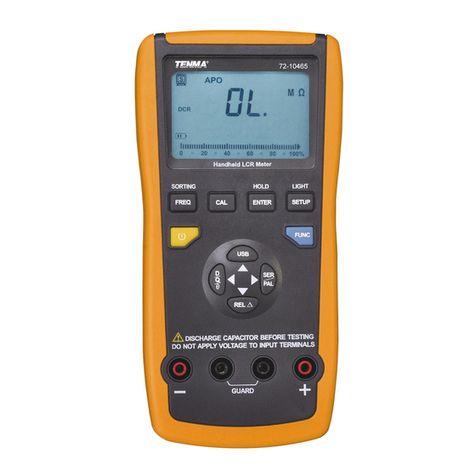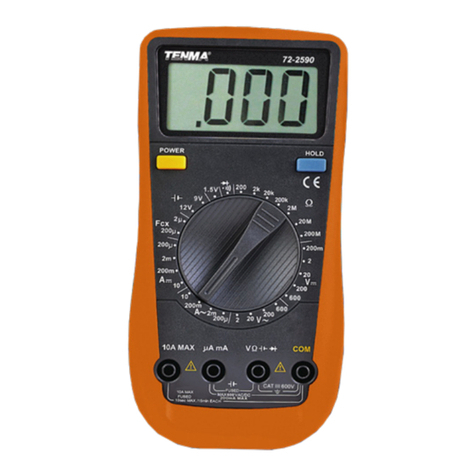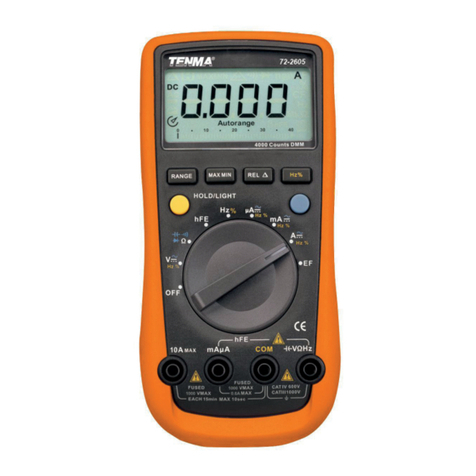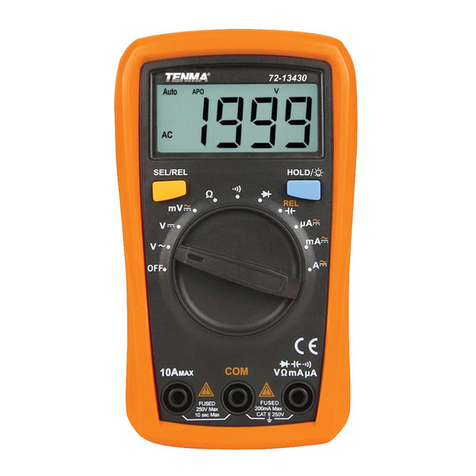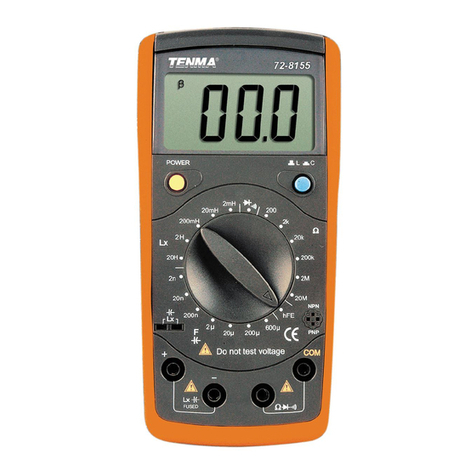2
This meter is designed to meet IEC61010-1, 61010-2-032, and 61010-2-033 in
Pollution Degree 2, Measurement Category (CAT II 600V, CAT III 600V) and double
Insulation.
• Do not operate the meter or use test leads if they appear damaged, or if the meter
is not operating properly.
• There are no user-serviceable parts in this product. Refer servicing to qualied
personnel.
• Do not apply voltage between the COM and OHM terminals, while in the
resistance measuring state.
• Do not measure current with the test leads inserted into the voltage or OHM
terminals.
• To avoid electrical shock and personal injury, do not attempt to measure voltage
higher than 600V AC/DC, although the readings may be obtained.
• Do not expose the instrument to direct sunlight, extreme temperature or humidity.
• Before measuring current, check the fuses and turn the power to the circuit off
before connecting the meter to the circuit.
• Disconnect circuit power and discharge all high voltage capacitors before testing
continuity. diode, resistance, capacitance or current.
• Take caution when voltages are above 60V DC and 30V AC rms.
• Do not use the meter around explosive gas or vapour.
• When using the test leads, keep your ngers behind the nger guards.
• Remove test leads from the meter before opening the meter case or battery door.
• Never operate the meter with the cover removed or the battery door open.
• Use only the test leads supplied or the protection may be impaired.
• Probe assemblies for mains measurements shall be rated as appropriate for
measurement category III according to IEC 61010-031 and shall have a voltage
RATING of at least the voltage of the circuit to be measured.
• Replace the batteries as soon as the low battery indicator appears on the display.
• Remove dead batteries from the meter or if it is not going to be used for a long
time.
• Never mix old and new batteries together, or different types of batteries.
• Never dispose of batteries in a re, or attempt to recharge ordinary batteries.
• Before replacing the battery, turn off the meter and disconnect all the test probes.
• To prolong battery life turn off the meter after use.
SAFETY INFORMATION
Please read these instructions carefully before use and retain for future
reference.
WHAT’S INCLUDED
• Digital multimeter
• User manual
• Cat III 600V test lead
• Point type K thermocouple
• Current clamp
